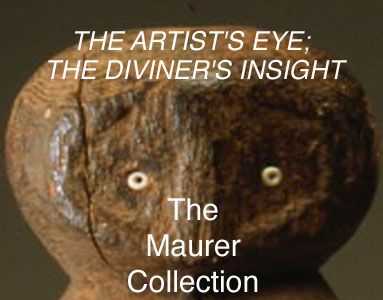

As Maurer pursued his interests in the artistry of the peoples of Zaire (recently re-named The Democratic Republic of the Congo), he became aware of variation in divinatory ritual practices throughout Central Africa, as well as West Africa, and acquired additional pieces that caught his eye and represented various cultural groups. Unfortunately, he did not have time to address the numerous questions which the collection raises: the question of the relationship of artistry to ritual artifact and ritual efficacy; the determination of what constitutes a divination ritual artifact; and the hoary question of aesthetic valuation- whose?Throughout this online catalogue, clicking on the image of an object will provide an enlarged, high-resolution picture of that object. However, for those viewing from off-campus browsers, the enlarged images will be inaccessible. Click here for more. |